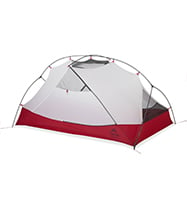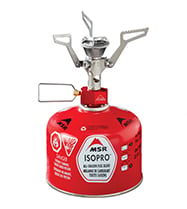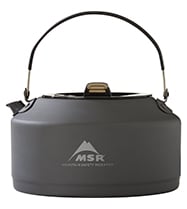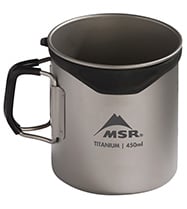The Carretera Austral by Bicycle: A Wild Ride through Chilean Patagonia
In Chile, they have a saying: Only those who hurry through Patagonia waste time. For any enthusiast of the great outdoors, it is one of the world’s truly great wildernesses—and somewhere to explore at a slow pace. The very word “Patagonia” stirs up images of grand mountains, thick forests, shimmering lakes and icy glaciers interspersed with a sparse population and lonely roads. The Carretera Austral is the iconic road running through Chilean Patagonia and has earned something of a lofty reputation for road-trippers of all means of transport. National Geographic Traveller dubbed it “the perfect road trip” with similar praise coming from Conde Nest Traveller.

In the two-volume account of his around-the-world cycle, British adventurer Alistair Humphreys dubbed the Carretera Austral as “the most beautiful road I have cycled”. There’s something intrinsically appropriate about tackling the Carretera Austral by bicycle. Cycle touring fits seamlessly with the received wisdom of exploring Patagonia slowly, and lends itself to magical moments immersed in nature—from free camping in quiet idyllic isolation to filling bottles from waterfalls that splash playfully right down to the roadside.

Part of the allure of the Carretera lies in its relatively recent development. Construction only started in 1976 and it wasn’t open to the public until 1988, with some sections not completed until 2000. Before it was built, most of the small towns and villages throughout this region of Chilean Patagonia existed in relative isolation from one another, as the local geography is characterized by steep terrain, thick forests, fjords and glaciers.

The difficulties presented by poor internal transport links were exacerbated during the 1970s after a series of border disputes between the governments of Chile and Argentina. In order to strengthen transportation infrastructure in their more remote territories, the military dictatorship of Chile, led by General Pinochet, undertook the construction of the Carretera Austral. More than 10,000 soldiers worked on it in conditions that have been described as not dissimilar to prison labor, with around 30 soldiers losing their lives during the process. The Carretera Austral thus has a similar heritage to many of the stunning quiet roads through the European Alps—beautiful to visit today, but with a history rooted in a conflicted past.
Although the original motivating factor behind the Carretera Austral was entirely political, it has nevertheless resulted in an iconic and lengthy road through mainly pristine and sparsely populated surroundings. Despite being over 1,200 kilometers/750 miles long, the total combined population of all the towns and villages the road connects is just over 100,000, which lends a wild and remote ambiance to the wider Carretera region. The photogenic landscape fulfills every quintessential image that Patagonia can muster.

My three and a half weeks of cycling the Carretera Austral was tough but rewarding. The word ‘lumpy’ springs to mind in two different contexts—lumpy as in hilly terrain, and lumpy gravel underneath. The road is rarely either flat or straight, as the mangled topography only allows for up or down while weaving left or right. Although some of it is paved, there are plenty of unpaved sections with the gravel as rough as guts in places. At times the road had simply been hewn out of the rocky hillsides, with the consequent rubble left to form something akin to a dried-up riverbed. There were definite moments of Type 2 fun on sections that had turned to washboard. But these are all parts of the vibe of Chile’s wild ride through its remote southern region.
The Carretera Austral’s increasing popularity as a cycling destination has created a sociable community of cyclists in the region. Even though I set out to cover it alone, I ended up joining forces with three other cyclists for about a week and had numerous conversations with cycle travelers of many nationalities heading in the other direction as we filled each other in on what to expect in our respective coming days.

Though there are often other options, free camping is one of the real delights of cycling the Carretera Austral and the practice seems to be widely accepted. At times camping is effectively obligatory since the distances between some villages can be too great to cover in one day on a bicycle. Over three and a half weeks my free camping locations included genuine wild spots like a grassy bank next to a river or on the shore of a postcard-perfect lake, camping for free (and with permission) behind a farmer’s barn, or even sleeping in a small shed I stumbled upon. Common courtesy applies to asking permission if there is anybody nearby, but often there wasn’t and I didn’t hear of any issues reported by other cyclists I spoke to along the way.
In addition to providing a great cycling experience, the Carretera Austral offers no shortage of opportunities for activities off the bike. This was important to me as cycling the Carretera formed part of my first ever longer-haul cycle tour: about three months in total across Patagonia, both the Chilean and Argentinian sides. Before then, the longest bicycle tours I’d been on had only been a week-long—I had some apprehension about whether too much cycling had the potential for boredom from one constant activity. Having activities off the bike helped to define the journey into smaller chapters, with days for meandering slowly by bicycle mixed up with different ways of enjoying my time.

Some of those included a day trying to remember my fly-fishing technique in one of Chilean Patagonia’s seemingly infinite supply of rivers, a boat trip on Lake General Carrera to explore the marble caves near Rio Tranquilo, and another boat excursion through the fjords to visit the San Rafael glacier. There were also genuine rest days, such as exploring the growing cerveza artesenal (craft beer) scene around Coyahique, or relaxing in the hot springs just out of Puyuhuapi. But those seeking an immersive nature fix won’t be able to resist the urge to stretch the leg muscles in a different way by fitting some hiking into their plans. Highlights for me were a 3-day/2-night trek out of Villa Cerro Castillo and day hikes in both the Tamango National Reserve and Patagonia National Park, both of which are near the town of Cochrane.

Despite the plethora of non-cycle activities, the true highlight was the numerous cycling days with no specific plan other than slowly drifting northwards at between ten and fifteen kilometers per hour (or six to nine miles/hour), watching wave after wave of spectacular scenery drift by. My mind would often wander back to that phrase, “Only those who hurry through Patagonia waste time”. Traveling the Carretera Austral by bicycle gave me plenty of opportunities to see it go by, to stop for photos when I wanted rather than whizz by in a bus or in a hitched ride, to linger in villages or stop for coffee when I wanted, rather than being at the mercy of scant available transport, and the freedom to call time on each day and make camp when and where I felt like it.
These observations helped me reach some conclusions on what cycle touring really means to me. To the uninitiated, someone packing their life away and disappearing to travel by bike for months at a time must be really, really into cycling. But the reality for me is quite different—my decision to cycle the Carretera Austral was driven by a desire for slow, autonomous travel through one of the world’s truly great wildernesses. The bicycle is an instrument to achieve that, but ultimately, it’s not about the cycling.

Gear List
Packing light is definitely advantageous on the hills and challenging gravel of the Carretera Austral. Aside from cycle-specific gear, this is my recommended kit list:
- MSR Hubba Hubba™ tent
- Therm-a-Rest NeoAir® XLite™ sleeping pad
- Camping stove and pots (necessary if free camping)
- Sleeping bag to cope with nighttime temperatures that can get to freezing (0C/32F)
- Merino base layers to use as pajamas
- A down jacket for the evenings
- Sun protection: SPF 50 sunscreen (the sun can be harsh at southerly latitudes due to the ozone layer being thinner down there), sun hat, sunglasses
- A waterproof/windproof jacket and waterproof leggings—the Carretera Austral can be infamous for four seasons in a day, any day of the year

How to Cycle the Carretera Austral Yourself
Weather: Although it can rain a lot in Patagonia year-round, it rains less during the southern hemisphere’s summer so consider traveling between November and March/April. January and February are peak summer but also school holiday months across Chile (their equivalent of August) and the busiest time for international tourists. My own time there was through March which I found rewarding.
Direction: One of the easiest things about cycling the Carretera Austral is navigation. It is one road that runs 1250 km from Puerto Montt in the north to Villa O’Higgins in the south. Simple! (Albeit with some optional detours.) It can be ridden in either direction, riding north to south is perhaps slightly more popular but I rode south to north since I was there at the tail end of summer so preferred to head away from the colder south.
Money: The currency of Chile is the Chilean peso. Smaller villages don’t have ATMs but some of the bigger settlements (eg. Chaiten, Coyahique, Cochrane) do. Visa/Mastercard are sometimes (but not always) accepted in stores or restaurants, but not usually at guesthouses. Basically, it pays to keep a reserve of pesos, although you will also find places along the way where you can change US dollars and sometimes Euros.
Dangers: There are no particular hazards en route apart from monitoring your own fatigue (there are 57,000 feet or 17,000 meters of elevation gain along the route), and managing the cold and wet should you get a bad spell of weather. There are no deadly insects or killer animals—pumas do exist but they’re quite rare and timid of human interaction.
Where to Stay: Accommodation for traveling cyclists along the Carretera tends to consist of free camping, official campsites and cheap guesthouses. Although costs vary between the guesthouses, US $12 to US $20 would be a common range and may or may not include a ‘free breakfast’ which normally consists of bread, jam and instant coffee.
Visas: Tourist visas for Chile are issued for free on arrival for most nationalities. Check the appropriate requirements for your passport.
Fees: Traveling the Carretera Austral itself is free of charge, but the national parks referenced above have their own entrance fees (though these were always quite modest).
Access: Although many who cycle the Carretera Austral do so as part of a longer voyage, if you are limited on time Puerto Montt has its own airport (connections from the capital city of Santiago). The southern part of the Carretera Austral is a lot more remote without much in the way of commercial airfields—Balmaceda (near Coyahique) has an airport but even that is only about the halfway point. The closest commercial airport to Villa O’Higgins is across the border in the Argentine town of El Calafate.
Language: English is often not widely spoken, especially in smaller villages. Learn some Spanish phrases!
Related Posts:
- Cycling the Peru Divide in the Andes – with GPX
- Did You Know? MSR Created the First Modern Bike Helmet
- Why This is the Ultimate Bikepacking Stove & Cook Kit
 ABOUT THE AUTHOR
ABOUT THE AUTHOR
Steve Marks, aka the Malbec Pilgrim, grew up in New Zealand but is now based out of London, UK. He’s not a huge fan of the winters there, so he escapes when he can for travel adventures, often by bicycle. You can keep up to date or ask him any questions via his website, his Facebook blog or his @malbecpilgrim Instagram account. For a more detailed overview of how he spent his time on the Carretera Austral, click the “South America Blog” tab of his website and scroll to the six entries between Days 30 and 59.




